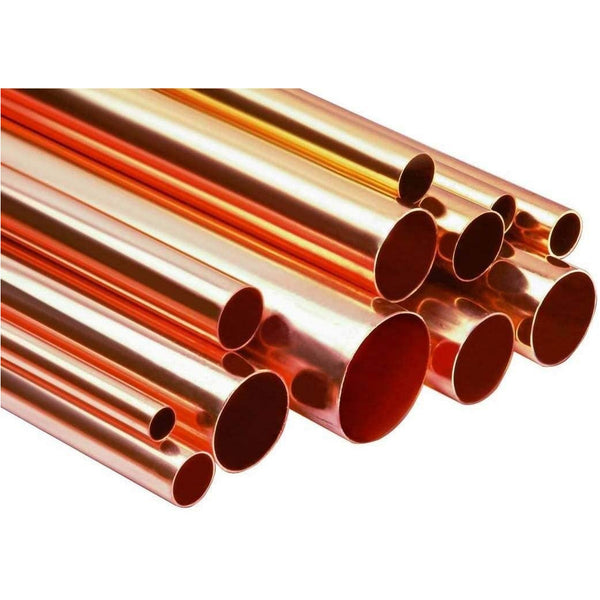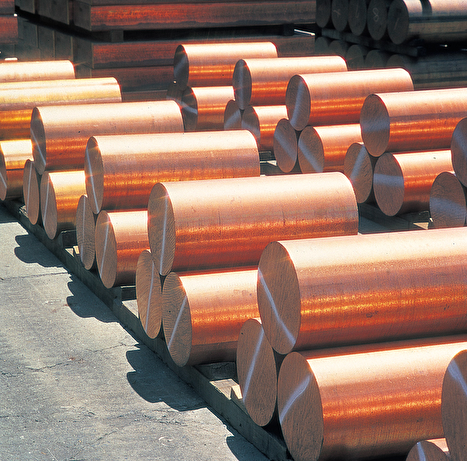From Art to Capability: The Many Applications of One-of-a-kind Copper Products
From Art to Capability: The Many Applications of One-of-a-kind Copper Products
Blog Article
Just How Copper Products Add To Sustainable Practices in Different Fields
In renewable power systems, for instance, copper improves the functionality of solar and wind technologies, while its application in construction reduces waste via durability. As sectors look for to adopt even more sustainable methods, the duty of copper could show essential in achieving ecological objectives.
Copper in Renewable Energy
Copper plays a vital duty in the improvement of renewable resource technologies, acting as an important conductor in numerous applications. Its exceptional electrical conductivity and resistance to corrosion make it a perfect material for electric circuitry, which is essential in solar panels, wind turbines, and energy storage space systems. In solar photovoltaic or pv systems, copper is made use of in the affiliations and circuitry, allowing effective energy conversion from sunlight to electrical power.
In wind energy, copper is indispensable to the generators and transformers that transform kinetic energy right into electric power, guaranteeing optimum efficiency and reliability. The need for electric vehicles (EVs) is enhancing, with copper being a key element in batteries, electric motors, and billing facilities. The transition to EVs substantially boosts the demand for copper, as these cars typically make use of four times much more copper than standard interior burning engine cars.
As the globe seeks to mitigate climate modification and shift to lasting energy resources, copper's duty becomes increasingly essential. The material not just boosts the performance and resilience of renewable resource systems however additionally supports the broader goal of minimizing greenhouse gas emissions and promoting a lasting future.
Eco-Friendly Building And Construction Materials
In the last few years, there has actually been a significant change in the direction of the adoption of eco-friendly building materials in response to growing ecological problems. This change is motivated by the requirement for sustainable options that reduce eco-friendly footprints while preserving structural honesty and visual allure.
Copper, known for its resilience and recyclability, has actually emerged as a vital gamer in this field. It can be used in roof, plumbing, and electric systems, adding to energy performance and reducing waste. Copper's longevity suggests less replacements with time, further boosting its sustainability profile.
In addition, products such as bamboo, recovered timber, and reused steel are acquiring popularity. These alternatives not just use decreased environmental influence yet additionally advertise resource conservation. As constructing codes progressively emphasize sustainability, building contractors and engineers are incorporating these materials into their tasks, fostering development in style.
The enhancing adoption of environment-friendly building materials reflects a broader dedication to sustainability in the constructed environment. By focusing on these products, the building and construction market can significantly lower its carbon impact, align with governing requirements, and support a healthier ecosystem for future generations. This trend notes an essential action towards an extra sustainable future in building and construction.
Copper's Role in Healthcare
Recent studies have actually highlighted the substantial function of copper in medical care settings, especially as a result of its antimicrobial homes. Copper surface areas have been revealed to lower the existence of microorganisms, consisting of bacteria and viruses, by approximately 99.9% within a short period. This exceptional efficiency makes copper an important product for high-touch surfaces in medical facilities, such as doorknobs, bed rails, and IV poles, thus adding to improved infection control steps.
In enhancement to its straight antimicrobial effects, copper also contributes in the wider context of health center sustainability (Copper Products). By incorporating copper into clinical tools and home furnishings, healthcare facilities can lower the occurrence of healthcare-associated infections (HAIs), which not only enhances individual results however additionally lowers the expenses related to prolonged hospital remains and added treatments
Furthermore, copper's sturdiness and recyclability straighten with lasting techniques, permitting for liable resource management. As medical care systems progressively prioritize both address patient safety and environmental stewardship, the assimilation of copper products is ending up being more widespread. This double advantage highlights copper's vital contribution to a much healthier, much safer, and much more lasting health care environment.
Sustainability in Transport

In addition, copper's sturdiness and corrosion resistance add to the longevity of transport facilities (Copper Products). In rail systems, for circumstances, copper elements boost the integrity and performance of signaling and power systems, necessary for minimizing delays and power intake. Furthermore, copper's role in renewable energy systems, such as solar and wind, sustains sustainable transport services by giving clean power for electrical transportation options
Investments in copper modern technology not just foster sustainability but likewise promote economic growth and work creation in environment-friendly markets. As sectors strive to fulfill rigid ecological regulations, the application of copper items in transportation becomes a crucial approach in achieving sustainability goals and promoting a cleaner, more efficient future.
Copper and Round Economic Climate
As the globe increasingly welcomes sustainability, the function of copper in the circular economy becomes ever extra considerable. Copper's inherent properties-- such as its conductivity, recyclability, and sturdiness-- setting it as a crucial material in a resource-efficient economic situation. The circular economy intends to decrease waste and make best use of source usage through recycling and reusing products, and copper master this respect.
The steel can be reused indefinitely without loss of top quality, making it an ideal candidate for sustainable practices across different markets, consisting of building and construction, electronics, and sustainable energy. By reprocessing and recuperating copper from end-of-life items, markets can dramatically reduce the demand for virgin materials, thereby decreasing environmental impacts related to mining and handling.
In addition, the assimilation of copper into round economic climate frameworks not only saves resources however likewise promotes technology. Organizations that focus on copper recycling add to an extra lasting supply chain, boosting their competitiveness while straightening with regulatory needs and consumer preferences for ecologically accountable products.
Final Thought
To conclude, copper items considerably add to sustainable methods throughout multiple industries. Their necessary function in enhancing renewable resource technologies, promoting green construction products, supporting infection control in medical care, helping with lasting basics transport, and embodying the concepts of a round economic climate underscores the versatility and relevance of copper. By incorporating copper right into numerous applications, sectors can achieve better performance, minimize ecological influence, and align with international sustainability objectives, inevitably cultivating an extra sustainable future.

Copper's excellent conductivity makes it a preferred material in electrical vehicle (EV) systems, improving energy effectiveness and efficiency. In addition, copper's role in eco-friendly energy systems, such as solar and wind, supports lasting transportation solutions by giving clean energy for electrical transportation options.
Their necessary role in boosting sustainable energy modern technologies, advertising green construction materials, supporting infection control in health care, helping with lasting transportation, and embodying the concepts of a circular economy emphasizes the versatility and importance of copper.
Report this page